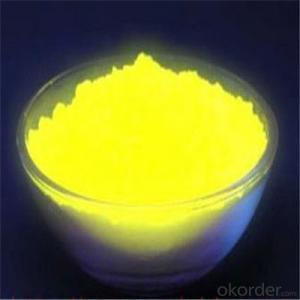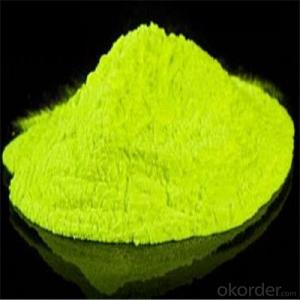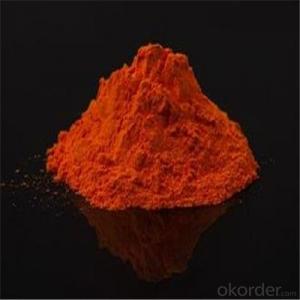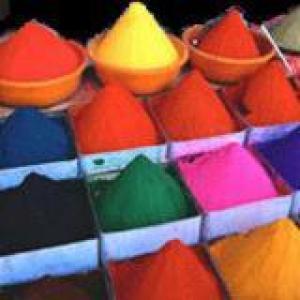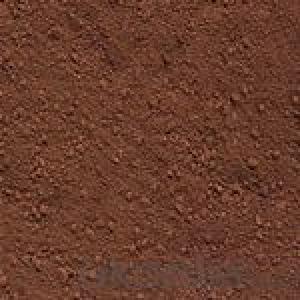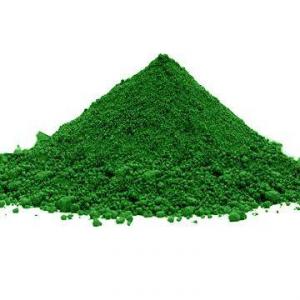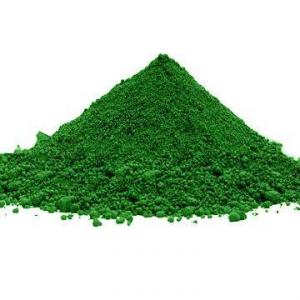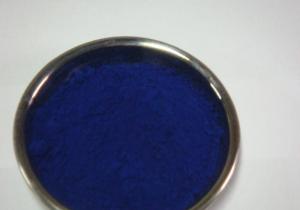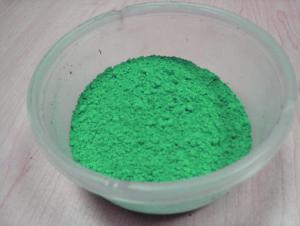LED Fluorescent Powder with Various Color
- Loading Port:
- Ningbo
- Payment Terms:
- TT OR LC
- Min Order Qty:
- 34 kg
- Supply Capability:
- 100000 kg/month
OKorder Service Pledge
OKorder Financial Service
You Might Also Like
Description of LED Fluorescent:
Separate the powder in the epoxy glue or silica gel uniformly, after deaeration, dot the powder on the CMOS chip, the LED encapsulation will be finished after solidification, etc. It also can be used after mixing with other phosphor (such as red and green powder) in certain proportion to get your required color temperature or rendering index.
Festures of LED Fluorescent:
The powder is a kind of yellow phosphor for LED encapsulation use with the characteristics of high brightness,good stability and no harm to human and environment, which is fired through special manufacturing techniques. This kind of powder is quite applicable to the encapsulation of high color rendering white LED or other lighting appliances.
Specifications of LED Fluorescent:
The decay time is the emission parameter that indicates temperature. Because the illumination and detection optics can be situated remotely, the method may be used for moving surfaces such as high speed motor surfaces. Also, phosphor may be applied to the end of an optical fiber as an optical analog of a thermocouple.
Images of LED Fluorescent:

FAQ:
1.When can i get the price quotation?
We can send you the quotation within 24hours after your inquiry, including the shipping cost if you need.
2.What about payment term?
30% T/T deposit, balance against B/L copy.
Full T/T payment if quantity less than MOQ.
3. What’s your after-sales service?
One-year warranty, and 1% common accessories.
- Q:are photosynthetic pigments separated based on their polarity or based on their molecular structure?Thanks
- Molecular structure... Chlorophylls are greenish pigments which contain a porphyrin ring. This is a stable ring-shaped molecule around which electrons are free to migrate. There are several kinds of chlorophyll, the most important being chlorophyll a. This is the molecule which makes photosynthesis possible, by passing its energized electrons on to molecules which will manufacture sugars. All plants, algae, and cyanobacteria which photosynthesize contain chlorophyll a. A second kind of chlorophyll is chlorophyll b, which occurs only in green algae and in the plants. A third form of chlorophyll which is common is (not surprisingly) called chlorophyll c, and is found only in the photosynthetic members of the Chromista as well as the dinoflagellates. The differences between the chlorophylls of these major groups was one of the first clues that they were not as closely related as previously thought. Carotenoids are usually red, orange, or yellow pigments, and include the familiar compound carotene, which gives carrots their color. These compounds are composed of two small six-carbon rings connected by a chain of carbon atoms. As a result, they do not dissolve in water, and must be attached to membranes within the cell. Carotenoids cannot transfer sunlight energy directly to the photosynthetic pathway, but must pass their absorbed energy to chlorophyll. For this reason, they are called accessory pigments. One very visible accessory pigment is fucoxanthin the brown pigment which colors kelps and other brown algae as well as the diatoms.
- Q:what is the relationship between chlorophyll a, accessory pigment?
- Sativa- uplifting, high, trippy, baked out of your gourd, ****** up, spacy Indica- passing out, baked, stoned, sleepy, couchlock, retarded, weird dreams
- Q:What are the roles and type of plant pigments?
- Pigments are able to absorb specific wavelengths of light which power photosynthesis. Chlorophyll, which is green, absorbs all wavelengths except green. Each photon excites an electron in the light harvesting complexes of a photosystem in a chlorophyll molecule, eventually producing ATPs. Other pigments will be a different color and will be able to absorb other wavelengths, maximizing energy absorbency when the sun's rays change. Pigments are chemicals inside living things that absorb certain types of light. In plants, the pigment chlorophyll in leaves absorbs sunlight for photosynthesis to work, where the energy comes from. Chlorophyll absorbs all light except green, which is reflected. That's why most plants are green...
- Q:what are the differences between colorfast and non colorfast pigments?
- Pigments, are generally solids and are usually insoluble in the medium in which the pigment is being used. Pigments, are typically used instead of dyes in applications where color migration or bleeding is undesirable. One possible approach to create a colorfast pigment for use in something like toothpaste would be in a layered anion exchange material which is contacted with the dye under conditions in which a water-insoluble pigment is obtained. The water soluble dye and the layered anion exchange material would normally be contacted together in a liquid medium in which the dye has been dissolved. The layered anion exchange material is preferably a layered aluminate of some kind. Generally, pigments are graded by international standards for color fastness. Eight is the most color fast, and anything over six will do quite well out-of-doors. As ancient Frescoes, sand paintings, petroglyphs and other pure-pigment art demonstrate, certain pigments can remain in direct sunlight for thousands of years without any indication of fading. These pigments are earth, metal, and chemical colors that are neither dyes nor tints. Dyes and tints, such as alizarin crimson, berry juice, etc. will bleach quickly due to ultraviolet exposure that occurs in direct or indirect sunlight. Today most paints are derived from much different sources than they were as recently as fifty years ago. Real cadmium, cobalt, copper oxide, to name a few, are no longer used. They are now formulated to appear similar to the traditional pigments. They may be extended out with white, resulting in an appearance that can differ with traditional counterparts. For the most part these new colors are very colorfast and without the addition of medium or varnish they will not fade when left in direct sunlight.
- Q:What are leaf Pigments?
- Pigments that are present in the leaf that impart colour to the leaf are called leaf pigments. They are chemical compounds. Green colour in plants is due to Chlorophyll. Cholorophyll are also of different types Chlorophyll-A, Chlorophyll-B, Chlorophyll-C and Chlorophyll-D. Different colours are imparted to plants by different pigments. Some are Xanthophyll and Carotenoids.
- Q:what is a pigment? Please describe it, and tell me the uses.?
- Pigments are a natural color in organisms. To understand pigments, you must understand the reflections of light. Pigments allows for organisms to have color, like the blue or brown in the eyes. For example, leaves in plants are color green because their pigments absorb all the colors because of photosynthesis except green and reflects off the color. Their plants are usually not green because they don't need to absorb light as much as the leaves does. Pigments depend on the type of light it absorbs. You are green in a dark room with green light right?
- Q:Does anyone know its chemical formula or constituents ?
- Epona's answer is extremely sturdy. in case you seem up colour institutions you will locate diverse institutions reckoning on who has written them and what structures they're drawing from. yet you'll be able to desire to continually use institutions that make experience to you. case in point - you will in all probability locate that easy blue is the colour linked with peace. yet reckoning on what form of peace you're going for you may go with a diverse colour. possibly purple if that is for peace in the kin or with acquaintances, pink if that is religious in nature, or eco-friendly if that is physique appropriate. The institutions I genuinely tend to circulate with are: pink - lust, action, means, braveness Orange - creativity, braveness, means (extra innovative form than the pink). Yellow - issues bearing on the concepts (like possibly you have have been given a attempt to earnings for) or psychological suggestion. easy eco-friendly - prosperity darkish eco-friendly - therapeutic easy Blue - peace, tranquility darkish Blue - desires, on occasion suggestion pink - issues coping with the religious White - purification and can be a stand in for extremely just about something Black - liberating negativity, banishing purple - love, friendship, kin i do no longer think there is any colour that would desire to be prevented. yet I often use a diverse affiliation than what i've got listed. And my institutions are in user-friendly terms valid for yet somebody else in the event that they make experience to them. i exploit white candles maximum many times as I continually have them handy and that they might continually be spiced up with diverse oils this is something I do very often.
- Q:Many of the microorganisms found on environmental surfaces are pigmented. Of what possible advantage is the pigment?
- So they can absorb different light frequencies to use for energy (from photosynthesis). Light travels in water according to the frequency (wavelength). So different pigmented organisms are able to exist in different environments, possibly reducing competition with other forms.
- Q:i love makeup so mucch im like addicted...lol but the only thing is that i only buy that department or drug store brands cause i cannot afford high quality brands. the one that i buy are good for me,,but anyways i was wondering what the heck is mac eyepigment,,what is the diffrence between eyeshow and pigment? pleas help thank u,,,oh yeah and what does it look,like on the eyes?
- a mac pigment is a highly concentrated loose eyeshadow just a little will give u alot of color as opposed to a regular eyeshadow which isn't as vibrant or pigmented to give you a visual, you know when you put on eyeshadow, you have to apply it a few times to see some decent color? .. with mac pigments its so concentrated that in the first stroke you can see the colour as it is in the pot. you can even use it as eyeliner
1. Manufacturer Overview |
|
|---|---|
| Location | |
| Year Established | |
| Annual Output Value | |
| Main Markets | |
| Company Certifications | |
2. Manufacturer Certificates |
|
|---|---|
| a) Certification Name | |
| Range | |
| Reference | |
| Validity Period | |
3. Manufacturer Capability |
|
|---|---|
| a)Trade Capacity | |
| Nearest Port | |
| Export Percentage | |
| No.of Employees in Trade Department | |
| Language Spoken: | |
| b)Factory Information | |
| Factory Size: | |
| No. of Production Lines | |
| Contract Manufacturing | |
| Product Price Range | |
Send your message to us
LED Fluorescent Powder with Various Color
- Loading Port:
- Ningbo
- Payment Terms:
- TT OR LC
- Min Order Qty:
- 34 kg
- Supply Capability:
- 100000 kg/month
OKorder Service Pledge
OKorder Financial Service
Similar products
New products
Hot products
Related keywords
